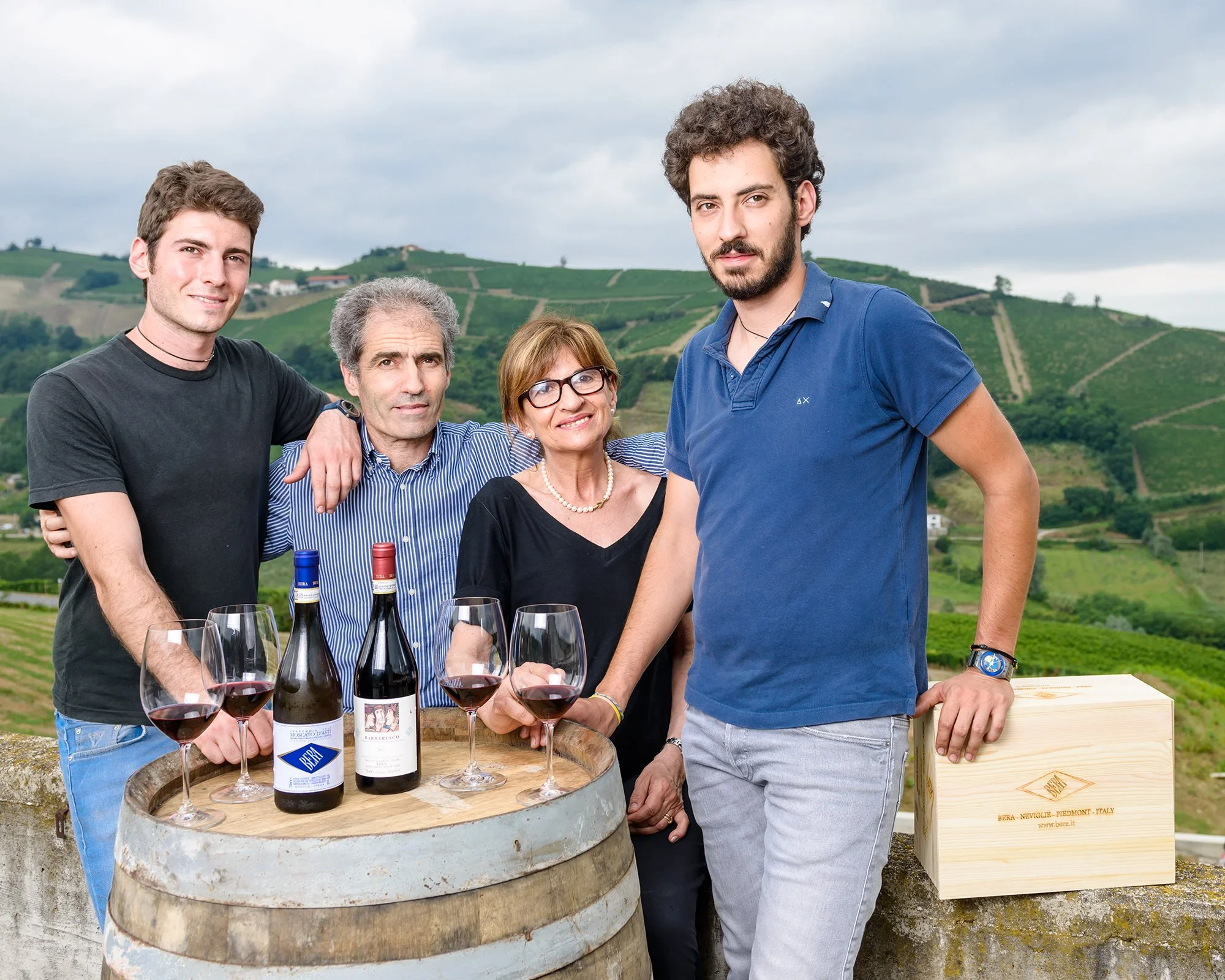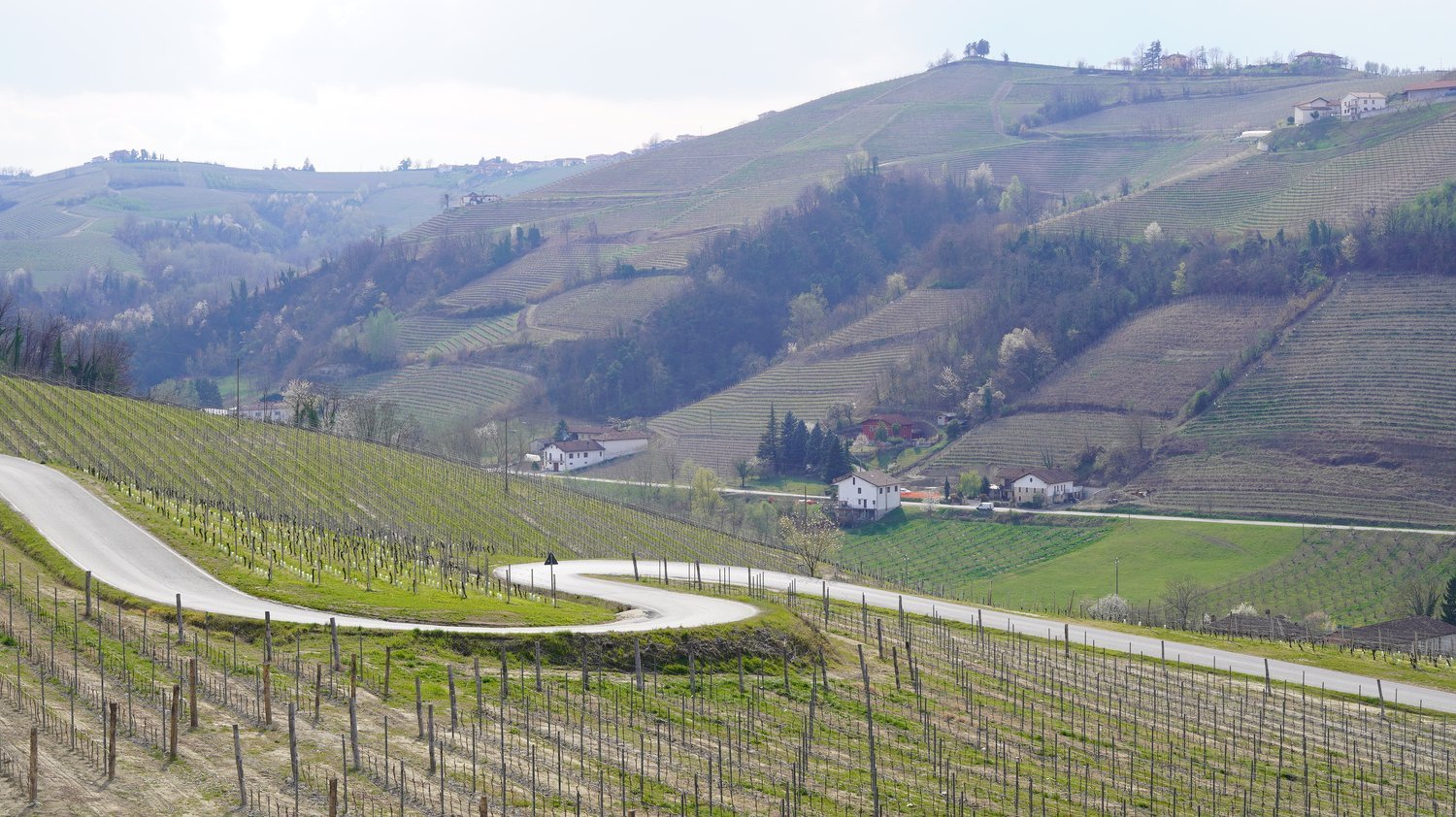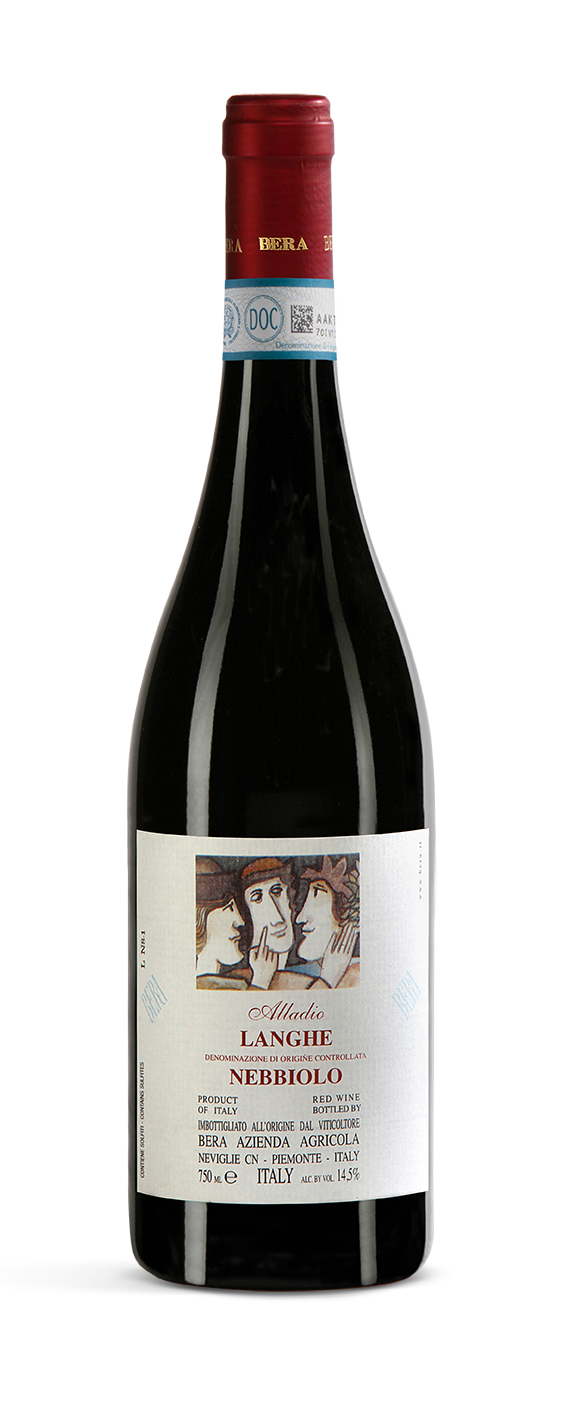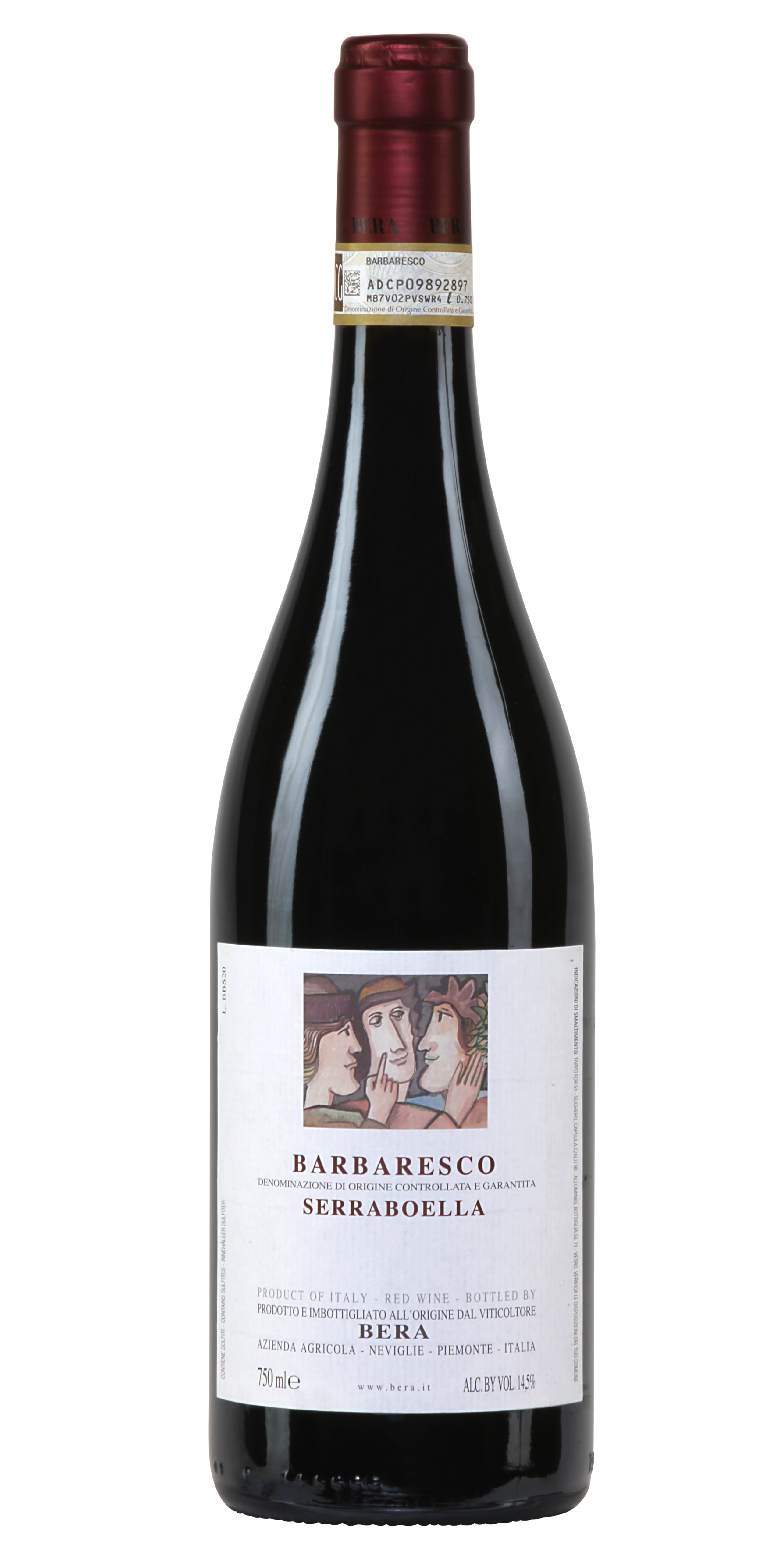Bera
Neviglie, Piedmont
Situated in Neviglie, near the Barbaresco DOCG, the Bera family estate has been a benchmark for the Langhe since the mid-20th century. The location is particularly advantageous: sharing Barbaresco’s celebrated terroir, yet with hillside vineyards that offer their own distinct expression of Nebbiolo, Dolcetto and Moscato.
The family’s story begins with Valter Bera, who dedicated decades to elevating the reputation of Neviglie’s wines. At a time when the region was still little known, his focus on quality vineyard work and authentic winemaking helped establish the estate as a point of reference for Moscato d’Asti and Dolcetto. That commitment to the land and to honest expression remains the foundation of Bera today.
Guided today by brothers Riccardo and Umberto, the estate has taken bold steps forward. Their energy and precision in both vineyard and cellar have seen Bera expand into Barbaresco with impressive results, capturing the elegance and depth of some of the area’s most prized crus. More recently, the acquisition of vines in the Mosconi cru of Monforte d’Alba has marked the family’s arrival in Barolo, where they are already producing wines of concentration, structure and vibrancy that reflect the pedigree of these sites.
Together, Riccardo and Umberto are affirming Bera’s place among the new generation of Langhe producers—rooted in family tradition, yet unafraid to modernise and push into new territory.
2023 Moscato d’Asti
Right at the top of the ladder of classic Piedmontese sparkling wines sits Bera’s Moscato d’Asti. Over the past 8 years, Umberto and Riccardo Bera have grown the vineyards, diversified the varieties of their wines, and modernised the winery, whilst honing in on this true art form and style of wine that has made their good fortune for so many years, and many more to come. The Stelvin cap closure does a great job of preserving the frizzante spritz and letting it out with the most satisfying sound. A must with torta di amaretti or stuffed peaches.
Winemaking
The fruit hand-harvested from east-south and south-west facing slopes between the first and the third week of September. Valter Bera is among the very best of small-scale Moscato d’Asti producers. He strives to honour this revered historic wine’s small-winery roots with a stripped back, thoughtful method.
Tasting Notes
It has a highly aromatic nose of sun-ripe apricots, orange peel, and the exotic scent of mango. Benchmark Moscato flavours of sweet lychee, ripe mango and creamed honey. It’s beautifully balanced with a perky acidity, a low alcohol level and a delicate froth brightening the finish.
2023 Barbera d’Alba
Valter Bera has dedicated considerable time and energy to making the wines of the Neviglie area known and appreciated. Across the Tanaro river, lither Barbera d’Alba thrives on Astiane sand-rich soils that impart the wines a certain sapidity and readiness to enjoy. Such is the synergistic connection between the soft sloped terroir of Neviglie and Bera’s Barbera d’Alba. Surrounded by the villages of Barbaresco, Neive, Mango and Treiso, Neiviglie is where the Bera old master house, new living quarters and wine cellar can be found. This Barbera d’Alba unveils darker fruit and less marked acidity, with a formidable structure that often characterises the Serralunga d’Alba crus. Every bit of it is worth the sacrifice of a few Barolo vines. Braised rabbit and olives make the perfect match.
Winemaking
The grapes are harvested from east, south and west facing slopes at the end of September. They were destemmed and crushed, then fermented for a week at controlled temperature. Once decanted and racked, the wine is stored in tank until Summer, while malolactic conversation took place. The wine was aged in bottle for 6 months before release.
Tasting Notes
The rich, deep dark ruby tone is echoed by intense blackberry, sweet blackcurrant, black olive tapenade, charred meat and liquorice characters on the nose and the palate. The fine, juicy tannins are in harmony with dense fruit characters, making for a long, moreish finish.
2022 Langhe Nebbiolo ‘Mio Vino’
Proof that Neviglie, and especially Bera, doesn’t limit itself to excellent Moscato. In fact, the ‘Mio Vino’ Langhe Nebbiolo shows that where there’s a will, there’s a way. Here, commitment, experience and ability conspire to produce a compelling Nebbiolo.
Winemaking
The fruit grows on East and West facing slopes composed of calcareous clay soil. The grapes are hand harvested and carefully selected. Once destemmed and pressed, the must is fermented in stainless steel tanks. It’s left on skins for up to 10 days, depending on the wine, to allow gentle extraction of tannin, varietal characters, and colour, while fermentation takes place. After malolactic conversion, the wine matures in large oak barrels or about 12 months. It’s bottle aged for 12 months before release.
Tasting Notes
This is a more candid wine suitable for immediate drinking, with intense red and black berry flavours, and broad tannins making up a generous palate. The tannin structure is soft and makes for a delicate finish.
2021 Langhe Nebbiolo ‘Alladio’
Quite the complete rendition of Langhe Nebbiolo, this wine is fashioned identically to the Barbaresco, except for the vineyard location, 500 meters short of the Barbaresco zone. This is structured, beautifully layered Langhe Nebbiolo, just as one would expect from a single site capable of putting out DOCG grade wines. With shorter cellaring time, it boasts the thrilling appeal of its youth.
Alladio is not mini-Barbaresco, it’s structured, layered Langhe Nebbiolo from a single site that delivers.
Winemaking
The fruit grows on a 50-year-old South-East facing vineyard situated classic Limestone over blue marl. It’s hand harvested at the end of September, early October. The grapes are destemmed and crushed, then fermented for a week in stainless steel. It’s left on skins for 28 days. After malolactic conversion, the wine is left to age in large oak barrels for 24 months. The wine’s aged in bottle for 12 months before release.
Tasting Notes
It’s garnet red coloured with orange tinges. It has an ethereal and persistent fragrance reminiscent of violet and rose scents. It has a more obvious, fruit-forward nose leading onto a dry, well-structured palate. It’s pleasantly savoury and generous, with well-integrated, sweet tannins making for an easy-going drinking experience.
2021 Barbaresco
This is an incredible interpretation of both Barbaresco terroir and the memorable 2019 vintage. The Bera family’s investments in top vineyard sites in Neive are paying off with this ‘regular’ Barbaresco, which is made up of half and half fruit from Basarin (South-West) and Serraboella (East), two sites that instill equal parts balance and structure.
Alladio is not mini-Barbaresco, it’s structured, layered Langhe Nebbiolo from a single site that delivers.
Winemaking
The fruit comes from the younger vines within the Basarin and Serraboella crus, at 250 meters above sea level, on East, South-East, and West facing slopes composed of limestone and clay over blue marl. It’s hand harvested, destemmed and crushed. The must is fermented for 2 weeks, then aged in small barrels for 24 months. It’s bottled-aged for 8 months before release.
Tasting Notes
This Barbaresco has a garnet red colour with orange tinges. In the glass it gives off ethereal and spicy fragrances, with light vanilla and flowery notes. It’s generous and on the fruity side, yet has an elegant, very delicate demeanour – sour cherry, black plum, blueberry, hints of cardamum and vanilla spice. The tannins chalky and powdery. It’s well-balanced with a persistent finish.
2021 Barbaresco ‘Serraboella’
Serraboella comes from vineyards in Neive with clay-limestone soils streaked with sand, a site known for producing Barbarescos of character and depth. Longer maceration and maturation in oak create a wine that shows both terroir precision and layered complexity. It is an elegant, site-specific expression that balances fruit generosity with Nebbiolo’s classical austerity.
Winemaking
The grapes are from west-facing vineyards on white clay-limestone soils with veins of sand. They are hand-harvested at full maturity, destemmed, and fermented with skins for 15–30 days. After malolactic fermentation, the wine is aged in oak barrels for 10–11 months, then bottled and rested for at least 8 months before release.
Tasting Notes
Brilliant garnet with orange hues, aromas of violets, red fruit jam, pepper, vanilla and liquorice flow into a palate of poise and structure. Tannins are firm yet refined, with flavours echoing the bouquet.
2021 Barbaresco Riserva ‘Rabajà’
Rabajà is one of the most esteemed crus of Barbaresco, and this bottling captures the vineyard’s hallmark power and aristocratic presence. Grown on clay-rich soils with a westerly exposure, the Nebbiolo here is harvested in early October and aged for 24 months in large oak casks. The result is a wine combining elegance, depth and longevity in equal measure.
Winemaking
The grapes come from Rabajà, one of Barbaresco’s most esteemed crus, grown on clay-rich, west-facing soils at a planting density of 4,200 vines per hectare and trained with the Guyot system. Hand-harvested in early October, the grapes are destemmed, crushed, and fermented for two weeks. The wine is then aged for 24 months in large oak casks before bottling.
Tasting Notes
Ruby red and brilliant with orange highlights, showing aromas of violets, red fruit preserves, pepper, and vanilla. Dry, elegant, and finely structured, with polished tannins. Full-bodied and harmonious, it pairs with red meats, game, and aged cheeses, but is also ideal to enjoy on its own.
2018 Barbaresco Riserva ‘Basarin’
Situated on the border of the commune of Neive and within arm’s reach of Barbaresco-township and Treiso, Basarin has become increasingly sought-after as a site for the production of nervy, elegant Barbaresco wines with Neive’s classic tannin structure. The Bera’s historical planting here justified the Riserva designation, and this wine enjoys extended maturation.
Winemaking
The grapes come from Basarin, a south-west facing, calcareous clay vineyard on the border of Neive, near Barbaresco and Treiso. Hand-harvested in early October, the grapes are destemmed, crushed, and fermented for two weeks. The wine is then aged for 5 years in large Slavonian oak casks before bottling.
Tasting Notes
Ruby red with orange highlights, showing aromas of violets, red fruit jam, pepper, vanilla, and licorice. Dry, elegant, and finely structured, with classic Neive tannins and great harmony.













